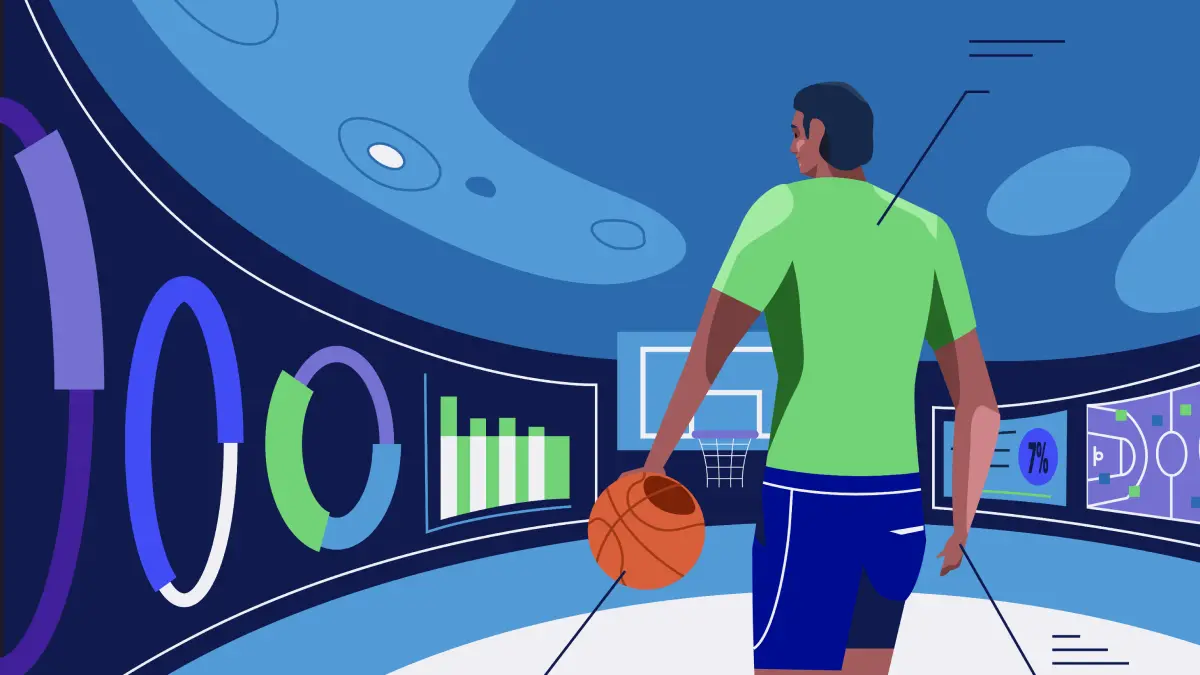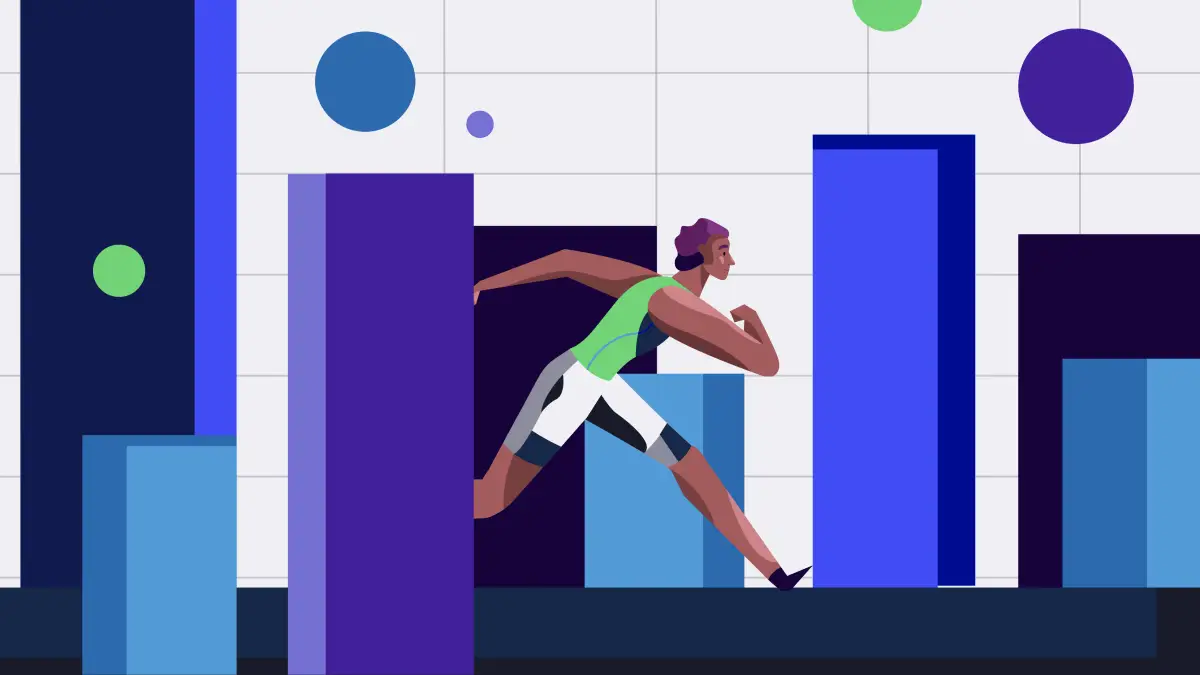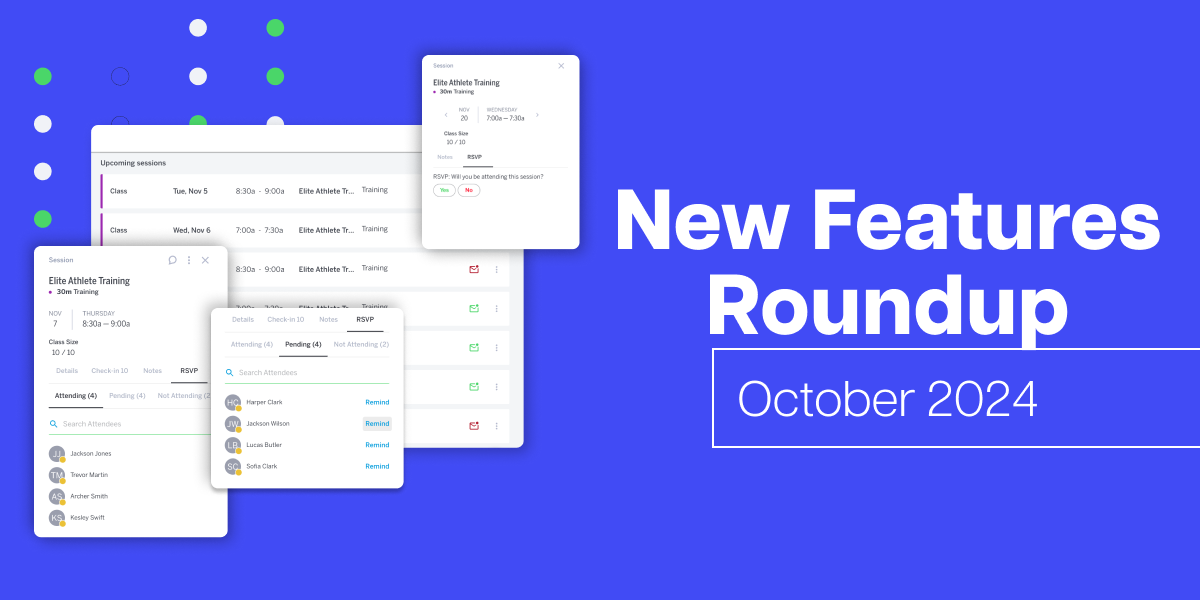Data is the future of the industry. And it’s already here.
An Interview with Kevin MacCauley
“We are seeing a seismic shift in our industry that I know other people are seeing in theirs as well. Data is the future of the industry – and it’s already here.”
At Upper Hand, we’ve talked a lot about how digital fitness and technology has challenged the businesses we serve. But, when it comes to running a studio, gym, or academy, AI is also beginning to take on a larger role within business operations.
Kevin MacCauley sat down with Michael Kelly on the Startup Competitors Podcast to discuss how Upper Hand views competition. While we compete with a number of brands in our space, we believe that our true competition lies in how well we can incorporate our vision of data into the marketplace.
Listen to the full episode here.
How does Upper Hand define competition?
When we look at competition, there are a lot of legacy players in the market, some that have been in the space for a while, that are in different segments of the areas that we target. Also, the changes in the fitness industry alone, including companies like Peloton gaining popularity, are definitely driving immense industry change.
One thing we’ve seen across the board in terms of running a business is data. If you paid attention to Apple WWDC earlier this summer, all the new updates they had to do with deep neural networks and machine learning, that’s all data driven, so we’re seeing this seismic shift in our industry that I know other people are seeing in theirs as well.
By and large, I see the competition being around how well we can incorporate our vision of data into the marketplace, where we’re going, and how we can help these businesses make better business decisions.
We just came off a year where so many times, we had to make tough decisions. Do I stay open or do I close temporarily? Do I close for 6 months? 8 months? The people that had organized data I suspect will be the ones that made the right decisions and came out well. So there are a lot of different things that are happening in our industry.
Watch: The Future of the Sports and Fitness Industry
How do you anticipate future growth at Upper Hand? Will Upper Hand continue to operate in the same flywheel or branch out?
We are very vertically focused, and one thing that is more prevalent in building a company is that while tech is relatively easy to build, the depth of that tech is still pretty weak. By becoming more vertically integrated in our space, we’ll be able to drive more value and create more cost advantages with respect to our business models.
As we continue to build value for our existing customers in our existing vertical, we also understand that we are all sitting on an s-curve around what to do with data and how fast some of those different pieces are moving within this movement. From the way we process payments to the way businesses use data, we are monitoring these trends and how they affect our industry. We are very focused on continuing to add value for our customers in that way.
How do you talk about the next feature to develop? Tell me a little about your product roadmap at Upper Hand.
First, we keep our ears to the rails to hear where the industry is going. When is the train on the way, when is it leaving, and what’s on it? The second piece we look at as it relates to customer feedback is that there are really two sides to our business. When you start to separate the two sides of the market that we serve — the businesses and the clients — there’s a lot of alignment on the businesses, but not a lot of alignment when it comes to the clients.
The client side is moving a lot faster than the business side, as we’ve seen with tech advancements like Apple Health, Fitbit, or Whoop. There have been a lot of good debates at Upper Hand about what to build next, specifically how much to focus on the business side vs the client side. At the end of the day, if more clients are coming into that business and are happier, then we are doing our job.
Related: How Myles Grote Built an Innovation Machine at Upper Hand
How much of what Upper Hand is doing is providing software to facilitate business operations versus educating business owners on what they should be doing in response to the industry?
I love this question, because this is the type of thing we focus on every day.
First, Upper Hand helps our customers facilitate running their business more efficiently through the core software, so we can help them spend less time figuring out which staff is working, how they’re paying them, which members need to be charged, and selling the next lesson pack to one of your members. As a result, they can spend more time focusing on developing the curriculum–the training–to make those athletes better, ultimately making the business better.
To your second point of how much do you help facilitate education of business models and not just to our current customers, and how to improve how they’re operating that business, it’s an ongoing piece of curriculum because business models evolve and change. We’re sitting here talking about disruption in a space with Peloton and Whoop, and others, so we believe it’s our job to help our customers understand those changes.
So, while we help facilitate the software to operate the business, I also see Upper Hand as the thought leader as it relates to helping people think about their business today. Personally, I think education is one of the most important things that anyone can be doing in our space because that provides the most value. Then, to put the two pieces together, showing people how to use the software as a means to achieving the goal of that education.
When you look at the evolution of the industry in 5 years and your product roadmap, what projects are you anticipating tackling in the future?
The number one thing we are looking at is becoming much deeper in terms of our market expertise around running a sports and fitness business. To get there, that means investing heavily on data development and data products. Really, it comes down to just thinking about how we’re helping our customers in the face of data and analytics and the shift that is happening across the board, going down the bridge of analytics, machine learning, of how we can help our customers use their own data to make better decisions, and in some cases not even make the decisions just tell them what the decision should be is absolutely where we see the industry going. In the next couple years, it is going to be critical to success.
Related: The Secret “X-Factor” for Sports and Fitness Businesses
What kinds of data will AI allow you to track?
Data and analytics are popular among the client facing side, allowing consumers to track recovery, sleep, workout performance, and other metrics. But, AI can also help business owners make smarter, more informed decisions.
In order to build on AI and predictive analytics, you must have data. Especially in the sports industry, one of the real pieces of value is the average time that a customer spends at your business. For example, let’s look at a baseball facility. Typically, on average, an athlete joins around the age of 8 and they leave around the age of 18. The data of these individual athletes is tremendously valuable for us to be able to help parents think about what sports their child should play in or help the business predict churn. Is this the right sport? Is their rate of development in line? Are they participating in enough events, and the right events?
Data also allows you to analyze what things the highest lifetime value customers are doing that the second tier is not doing, that tier 3 is not doing, and so on. That really helps open up the floodgates for our customers figuring out how to engage with their clients. Maybe blasting an email out to all 20,000 of your contacts every day is not the most effective. There are people that should be categorized as the non-persuadables because you actually hurt your conversion rate when you’re hitting those people that don’t want to be hit instead of focusing your marketing budget and your touches and your time on the persuadables.
If you can hit the right people at the right time, with the right message, it’s actually going to improve their performance, and help the business make money.
Related: How to Use Data to Drive Decisions Making (and why it matters)
Are you ready to be a part of the future of sports? Get a demo today to see how Upper Hand can help your business grow.





